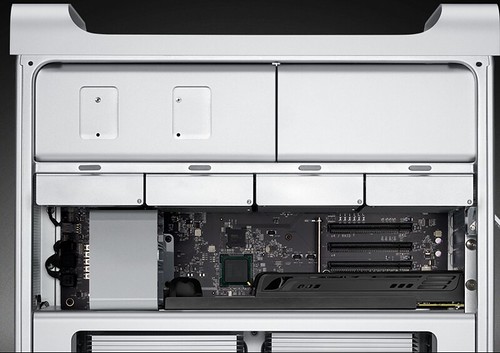The end of ordering for the Apple Xserve is today, and there may be a solution waiting to be announced. Macgasm’s own Stephen Hackett explained some of the issues when the announcement was made.
One thing to add to his thoughts on why Apple pulled the Xserve. Look at it from Apple’s perspective. They have to keep a production line open to manufacture the rather few units that they will sell. They need to put out more iOS devices, laptops, and desktop computers than they need Xserves. Being able to convert that manufacturing line to put out these products will allow them to make more of them more quickly.
If Apple uses their existing Mac Mini and Mac Pro manufacturing lines to quickly build an order from a customer, it’s much simpler and definitely more cost-effective to replace the outer case, as with the Mac Mini Server, and put in the additional cards, memory or other options as is the case with the Mac Pro Server. This allows Apple to keep their costs down while still providing a solution to customers. Don’t get me wrong though—it still does suck that there is not a rack-mountable form-factor for the Mac.
So the Xserve is going away, and there is a potential solution. What does this mean for OS X Server in general? There has been significant speculation, particularly from the OS X Server mailing list, on this topic.
I don’t see OS X Server going away for quite a while. I say this because OS X Server is essentially the same basis as OS X Client. It doesn’t take nearly the resources to develop OS X Server since the majority of the code is the exact same as OS X Client. Surely it doesn’t cost Apple that much to continue to develop Server.
The second reason I say this is that Apple does have hardware platforms that are capable of running OS X Server. The Mac Mini server is capable of doing a signifiant number of things despite its hardware limitations of 1TB of hard drive space, 8GB of Memory, and Core 2 Duo processor.
The Mac Pro Server offers a much larger array of options: up to 32GB of Memory, up to four 2TB hard drives, dual optical drives, and a RAID Card. This allows IT departments to customize what they would like. The Mac Pro Server does offer an advantage over the Xserve by allowing a RAID option to be RAID5 with an online-spare. This means that should a drive fail, the spare will automatically come online, and the RAID array will be rebuilt automatically. If a drive failed with the Xserves, it would just be degraded until the failed drive was swapped out.
As an alternative to both of these methods, there is always the option to put OS X Server on an iMac as well. Yes, it will have a screen, and it is not as nice to store, but it can still be an option for some environments.
The final reason I argue that OS X Server isn’t going to go away is that there is still a market for OS X Server. Sure, you can configure OS X Client to do everything you need to. But taking this approach is a kludge and can be rather cumbersome and a hazard to support and maintain.
Overall I don’t foresee OS X Server disappearing in the near future. It could potentially be that at some point in the not-too-distant future OS X Server and OS X Client will be combined. Although, potentially by that time everything will be running on iOS and we’ll have an iOS Client and iOS Server. Imagine an Apple TV running iOS Server… talk about speed.
Photo Credit: Apple








